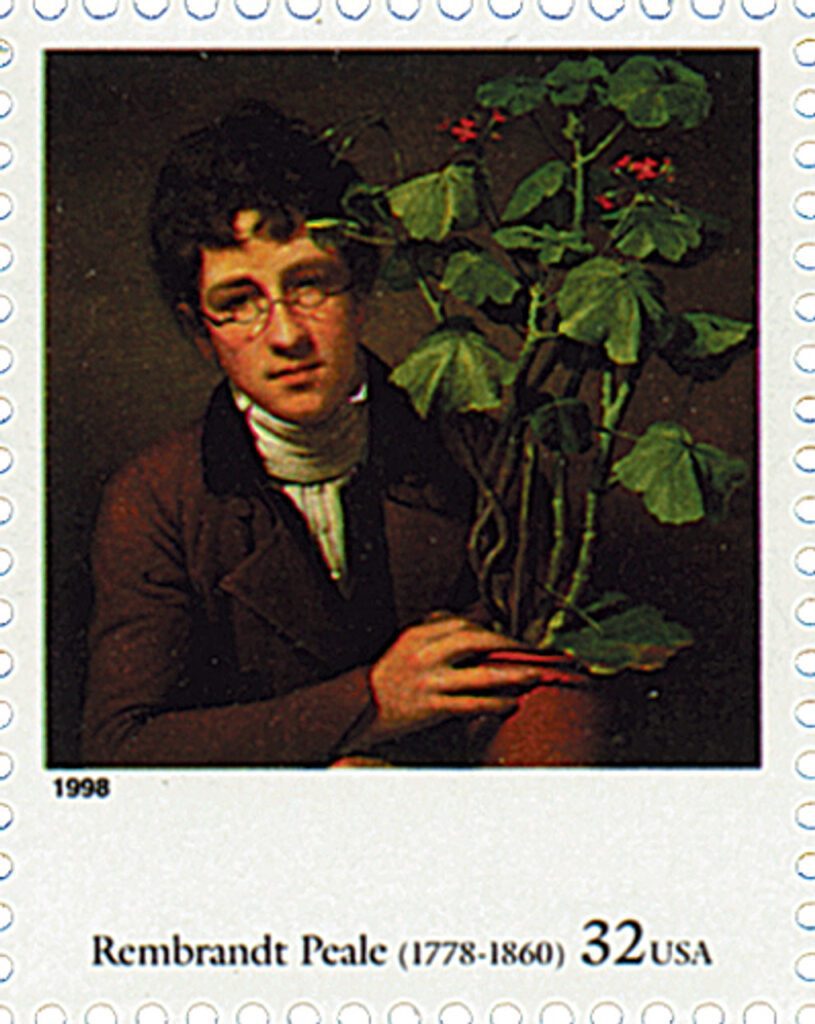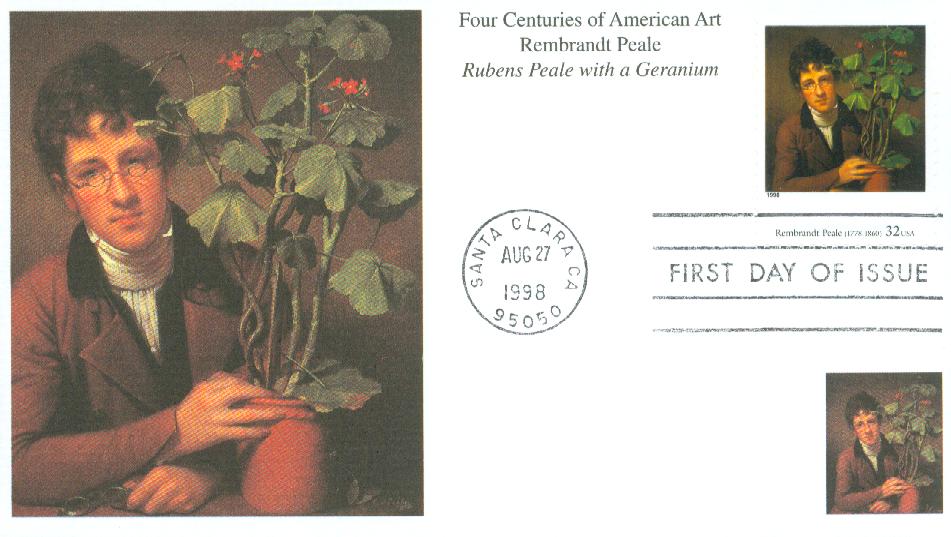Artist Rembrandt Peale was born on February 22, 1778, in Bucks County, Pennsylvania. He completed more than 600 paintings during his lifetime, including dozens picturing George Washington.
Peale was the son of famed Revolutionary War painter Charles Willson Peale, and was named after the 17th century Dutch painter Rembrandt van Rijn. Peale’s father taught him and his siblings to paint from an early age. Peale started drawing when he was eight and made his first self-portrait when he was 13.
Peale first met George Washington in 1787 when the future president came to be painted by his father. The younger Peale then got his chance to paint Washington in 1795, when he was 17 years old. Peale’s painting was well-received and established him in the art community.
Following that first sitting, Peale went on to paint Washington at least 76 more times, using the original portrait as a guide. He had never been satisfied with that painting and wanted to improve on it. He studied other portraits by notable artists as well as his own in his attempts to find a masterpiece. These portraits are known as the “porthole paintings,” because the large, oval frames resemble the portholes of a ship.
These portraits were also available in a variety of different combinations. One could purchase Washington looking right or left, in military or civilian dress, at half-length or on horseback. Peale finally completed a version of the painting he liked in 1824 and called it Patriae Pater (father of the country). Some consider this painting to be the second-best portrait of Washington after Gilbert Stuart’s Athenaeum. Peale’s portrait now hangs in the Old Senate Chamber.
Peale studied art in Europe for a time. While there, he painted notable Europeans including explorer Alexander von Humboldt, scientist Joseph Louis Gay-Lussac and botanist François André Michaux. Returning to America, Peale lived in Philadelphia for a time but struggled to find success. He then moved to Baltimore and opened his first museum. It was the first building built in the US specifically to serve as a museum.
Over the course of his career, Peale made more than 600 paintings. He painted a number of notable figures including Napoleon Bonaparte, Thomas Jefferson, John Marshall, and John C. Calhoun. Peale died on June 12, 1860. Today his paintings hang in numerous museums around the country.
Click here to view some of Peale’s paintings.
| FREE printable This Day in History album pages Click here to download a PDF of today’s article. Click here for a binder and other supplies to create your This Day in History album. |
Click here to see what else happened on This Day in History.






This Day in History. If I were a history teacher I would make this site a part of my students curriculum. But it is not. Why? Today, when we observe what is going on in this nation and all the problems it faces, it is obvious that the foundation; the principles that this nation was founded on is in a dire situation. Let us simply focus on education and its program of racial inequality. Race-based lessons begin at the college levels and trickles down to the lower levels – pushing Socialism which is promoted and financed by this so-called “Elite” class of bad actors and their media. Race and color would hardly be an issue if left alone but instead it’s now being used to rewrite and destroy American history. Calling Washington, Jefferson, and Lincoln racists and tearing down these iconic statues/memorials is a case in point. Yes we know who the bad actors are, but can they be stopped? At this point we can only pray as our forefathers did during our Revolutionary period.
How can you leave the issue of race and color alone? Admittedly there is only one human race but did you miss the Amendments and laws dealing with these matters?
No political words here. Just thanks for the history lesson and now I know who he was. Thanks
Fellow Readers: Rembrandt Peale painted those Founding Fathers as inspiring, heroic, valiant figures because—surprise—the were such figures in real life and while Peale showed craft and artistry, there was no hero worship excess in portraying our early leaders who led from the front in a perilous time with no guarantee of the outcome or their own survival. The British rope was waiting for Washington, et al. Peale did them and us Americans justice by his great work.